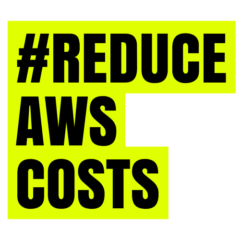To reach AWS cost efficiency companies often migrate to the cloud with the aim of saving IT costs, making cost optimization a fundamental consideration irrespective of business size or industry. Highlighted below is an essential AWS cost optimization checklist that provides a comprehensive perspective on effectively managing cloud expenses.
AWS Cost Efficiency checklist
To ensure efficient cost management during cloud migration, start by planning the migration accurately. This involves minimizing the costs associated with cloud migration services before addressing infrastructure maintenance expenses. Gain a thorough understanding of both pre-migration and post-migration costs. Pre-migration costs encompass deferred expenses, applications reconfiguration, and onboarding education, while post-migration costs may include performance tests, underutilized resources, and security expenses.
AWS Auto Scaling for Reaching AWS Cost Efficiency
Enhance elasticity by making use of AWS Auto Scaling, which includes the built-in AWS Instance Scheduler to automate start and stop plans for Amazon RDS and EC2 instances. This enables the shutdown of instances during periods of non-use.
YES
NO
Optimize instances by rightsizing
Optimize instances by rightsizing them according to current resource usage, selecting the most affordable instances that align with business performance needs. Consider aspects such as RAM, storage network, and CPU utilization.
YES
NO
Leverage the costs by utilizing AWS native tools
Leverage the appropriate cost model within your budget by utilizing tools like AWS Cost Explorer to comprehend on-demand, spot, and reserved instances through EC2 pricing models. The Trusted Advisor feature can further assist in ensuring accurate decisions from the outset.
YES
NO
Remove obsolete EBS volumes and snapshots
Efficiently manage storage costs by removing obsolete EBS volumes and snapshots, avoiding expenses for storing unnecessary data. Establish routine optimization practices and use AWS cost and reporting tools to monitor and mitigate unwarranted charges.
YES
NO
Utilize cost-effective resources
Utilize cost-effective resources, including instances and workloads, with the support of AWS Managed Services for effective implementation.
Continuously measure results and refine optimization strategies over time for ongoing improvement.
YES
NO
Incorporate cloud financial management practices
Incorporate cloud financial management practices, known as FinOps, into your AWS cost optimization best practices. FinOps involves integrating systems, culture, and best practices to comprehend cloud costs effectively.
YES
NO
Collaborate with a trusted cloud migration vendor
Collaborate with a trusted cloud migration vendor to guide you through vital processes at reasonable rates, ensuring a seamless and cost-efficient transition.
YES
NO




